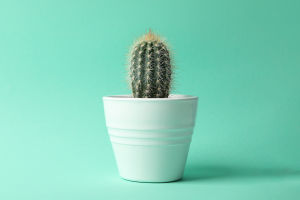Seed germination is a key link in the life cycle of plants, involving a series of complex physiological and environmental conditions.
To understand the conditions for seed germination, we first need to clarify the characteristics of the seeds themselves.
Seeds are the reproductive structures of plants, usually composed of embryos, seed coats, and stored nutrients. The main function of seeds is to protect the embryo and promote its germination under appropriate environmental conditions.
The first step in seed germination is water absorption. Seeds are dormant in a dry state and can only begin to germinate when environmental conditions are suitable. When the soil or environmental humidity reaches a certain level, the seed coat on the surface of the seed absorbs water and swells.
This process is called "water absorption" and is the primary condition for activating the physiological reaction inside the seed. Water not only provides the necessary environment for cell metabolism but also helps the nutrients stored in the seeds to be converted into usable forms to support growth.
After water absorption, the seeds begin to respire, a process that requires oxygen. The supply of oxygen is essential for metabolic reactions inside the seeds.
Through respiration, seeds convert the starch, fat, and protein stored inside into energy to support the division and growth of new cells. If there is insufficient oxygen, the seeds may not germinate normally due to a lack of energy.
Temperature is another important factor affecting seed germination. Seeds of different plant species have different adaptability to temperature, and the optimal temperature range for germination is usually between 15°C and 30°C.
Too low a temperature will slow down metabolic reactions, resulting in delayed germination, while too high a temperature may damage the structure and function of the seeds or even cause death.
A suitable temperature can accelerate the activity of enzymes and promote chemical reactions inside the seeds, thereby accelerating the germination process.
Light conditions can also affect the germination of some seeds. Some seeds can only germinate in the dark, while others require light to trigger the germination mechanism.
This is related to the type and ecological adaptability of the seeds. Light can affect seed germination by influencing the distribution and activity of hormones such as auxin.
In addition, the physiological state within the seeds is also a key factor in determining the success of germination. Many seeds form a dormant state when they mature to resist adverse environmental conditions.
Dormant seeds may regain vitality and begin to germinate under appropriate environmental conditions, while they will remain dormant under adverse environmental conditions until the environment improves. Breaking the dormancy of seeds usually requires certain treatments, such as mechanical crushing, fire, or exposure to low temperatures.
Some plant seeds require specific chemical stimulation to germinate. For example, seeds of some tropical plants need to pass through the digestive tract of animals to remove inhibitory substances on the seed coat, thereby promoting germination.
This animal-dependent germination mechanism is an adaptive strategy formed by plants during evolution, which can ensure the spread of seeds and select a suitable growth environment.
The nature and nutrients of the soil also directly affect the germination and growth of seeds. Soils rich in organic matter usually provide sufficient nutrients and good water retention capacity, which helps seeds germinate smoothly.
In contrast, poor soil or poor soil structure may limit the seeds' access to water and nutrients, thereby affecting the germination rate and the growth of seedlings.
Changes in environmental conditions, such as rainfall, temperature, and soil moisture, can also affect the timing of seed germination. Many plants wait for rain to arrive before germinating after experiencing drought. This adaptive mechanism ensures that seeds develop in a suitable environment.
In addition, the seeds of some plants will begin to germinate under suitable conditions in spring after a certain period of low temperature (winter dormancy), a phenomenon known as "vernalization."
Seed germination is a complex process affected by many factors. Water, oxygen, temperature, light, and soil conditions all play an important role. Understanding these conditions can help agricultural producers optimize the planting environment and increase crop yield and quality.
In nature, plants develop diverse survival strategies to ensure successful germination and growth of seeds by adapting to different environmental conditions. This interaction between organisms and the environment is not only the key to plant survival but also an important part of the balance of the ecosystem.


